
Interviews with People Inspired by Oz
Hosted by The Daily Ozmapolitan

The March Hare of Oz
A Conversation with Paul Bienvenue
Paul Bienvenue runs March Hare Books, a used and rare book service with special emphasis on Baum and Oz. In 2009, Paul published The Book Collector's Guide to L. Frank Baum and Oz. It won the gold medal for Best Reference Book at the 13th Annual Independent Publisher Book Awards. I asked him how he began his library of Oz collectibles...
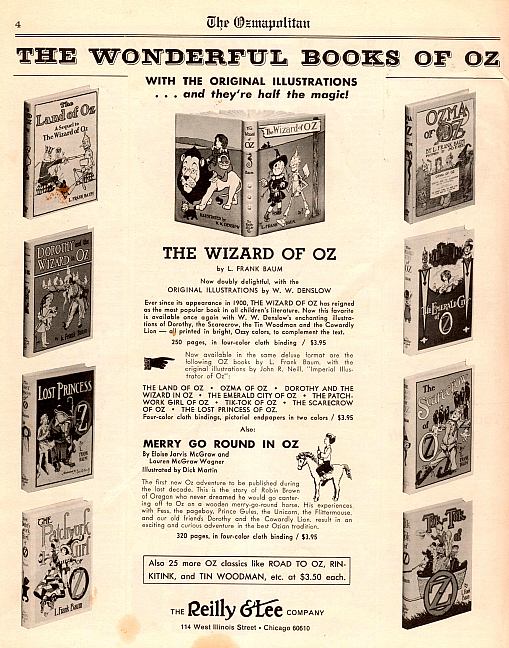 PB: I first
read The Wonderful Wizard of Oz when
I was ten, as one of several books my mother had brought home from the
local
public library. I enjoyed it immensely, relishing the ways in which it
differed
from the MGM movie that I watched annually on television, and was
intrigued to
learn that the library had a whole shelf of Oz stories. These turned
out to be
a mostly-complete set of the hardcover “white editions” of Baum’s Oz
books
published by Reilly & Lee in the 1960s and ‘70s. I devoured them
voraciously. Some of these books
bore lists that included the
entire Oz Canon,
including twenty-six exotic-sounding titles by writers not named Baum. By this
time the books by the later Royal Historians were completely out of
print. My
mother was already an accomplished antique hound and regularly dragged
me to
garage sales, swap meets, and antique shows, and the search for Oz
changed me from
being passively dragged about to actively participating. Shortly
thereafter I
was able to visit bookseller row on
PB: I first
read The Wonderful Wizard of Oz when
I was ten, as one of several books my mother had brought home from the
local
public library. I enjoyed it immensely, relishing the ways in which it
differed
from the MGM movie that I watched annually on television, and was
intrigued to
learn that the library had a whole shelf of Oz stories. These turned
out to be
a mostly-complete set of the hardcover “white editions” of Baum’s Oz
books
published by Reilly & Lee in the 1960s and ‘70s. I devoured them
voraciously. Some of these books
bore lists that included the
entire Oz Canon,
including twenty-six exotic-sounding titles by writers not named Baum. By this
time the books by the later Royal Historians were completely out of
print. My
mother was already an accomplished antique hound and regularly dragged
me to
garage sales, swap meets, and antique shows, and the search for Oz
changed me from
being passively dragged about to actively participating. Shortly
thereafter I
was able to visit bookseller row on WW: What are some of the Baum series
books that you wished he had continued?
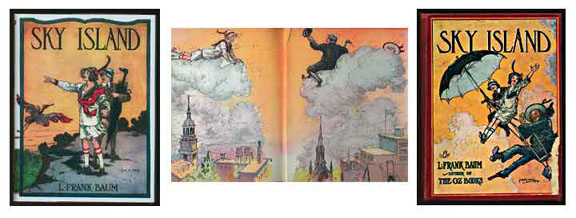
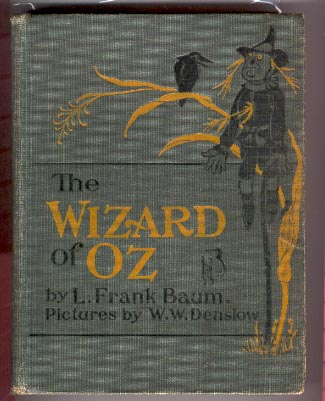
WW: What is your rarest treasure?
PB: Tough
call! I have an original pen-and-ink illustration by Frederick
Richardson from Queen Zixi of Ix. Beyond the obvious
fact
that any original artwork is “one-of-a-kind,” I’m not aware of any
other
illustrations having survived from Zixi.
I also have a salesman’s sample copy of
the second edition of The New Wizard of Oz
from ca. 1905-10 that has
a brilliant cloth cover, pictorial illustrated endpapers, and 260
completely
blank pages. On the rear fixed endpaper are the cloth spines for four
other
Baum books issued by Bobbs-Merrill: The
Magical Monarch of Mo, The
WW:
What is the one item you
would
most like to add to your collection?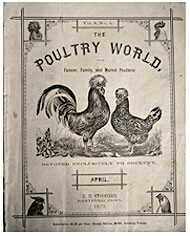
PB: Beyond
some one-of-a-kind pieces in private and institutional collections
which could
not be obtained without a shameful amount of skullduggery, I’d have to
say a
copy of The Book of the Hamburgs
(1886), the compilation of articles originally published in The
Poultry World magazine in 1882 and
technically Baum’s first “book.” I know of just seven surviving copies,
and
only two of these are in private collections. Or perhaps the first
printing
copy of The Marvelous Land of Oz, in
dust jacket and inscribed by Baum to his sister Mary Louise Brewster,
that was
part of rare book dealer Howard Mott’s catalog of wonders from Jack
Snow’s
personal collection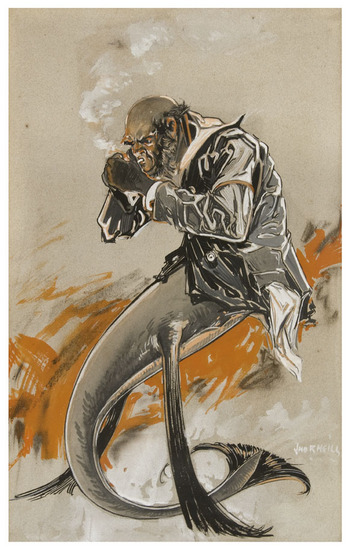 (ca. 1950). That copy
seems to have dropped off the face of
the Earth, so conceivably it could show up here at a neighborhood
garage sale. Barring either of those, I’d love a copy of The
Sea Fairies in Binding A and dust jacket; to date, no such copies
have ever
been observed. Bloomsbury held an auction recently that included Neill’s
original artwork for one of the color plates from The Sea Fairies.
I already deeply regret that I was unable to buy it.
(ca. 1950). That copy
seems to have dropped off the face of
the Earth, so conceivably it could show up here at a neighborhood
garage sale. Barring either of those, I’d love a copy of The
Sea Fairies in Binding A and dust jacket; to date, no such copies
have ever
been observed. Bloomsbury held an auction recently that included Neill’s
original artwork for one of the color plates from The Sea Fairies.
I already deeply regret that I was unable to buy it.
WW: What do you feel is Baum's best piece of literature and his worst? Why?
PB: It can
certainly be argued (and has been), that The Wonderful
Wizard of Oz is not Baum’s finest work. Critics have
cited Queen Zixi of Ix as his most
polished fairy tale, and at the end of his life Baum himself viewed
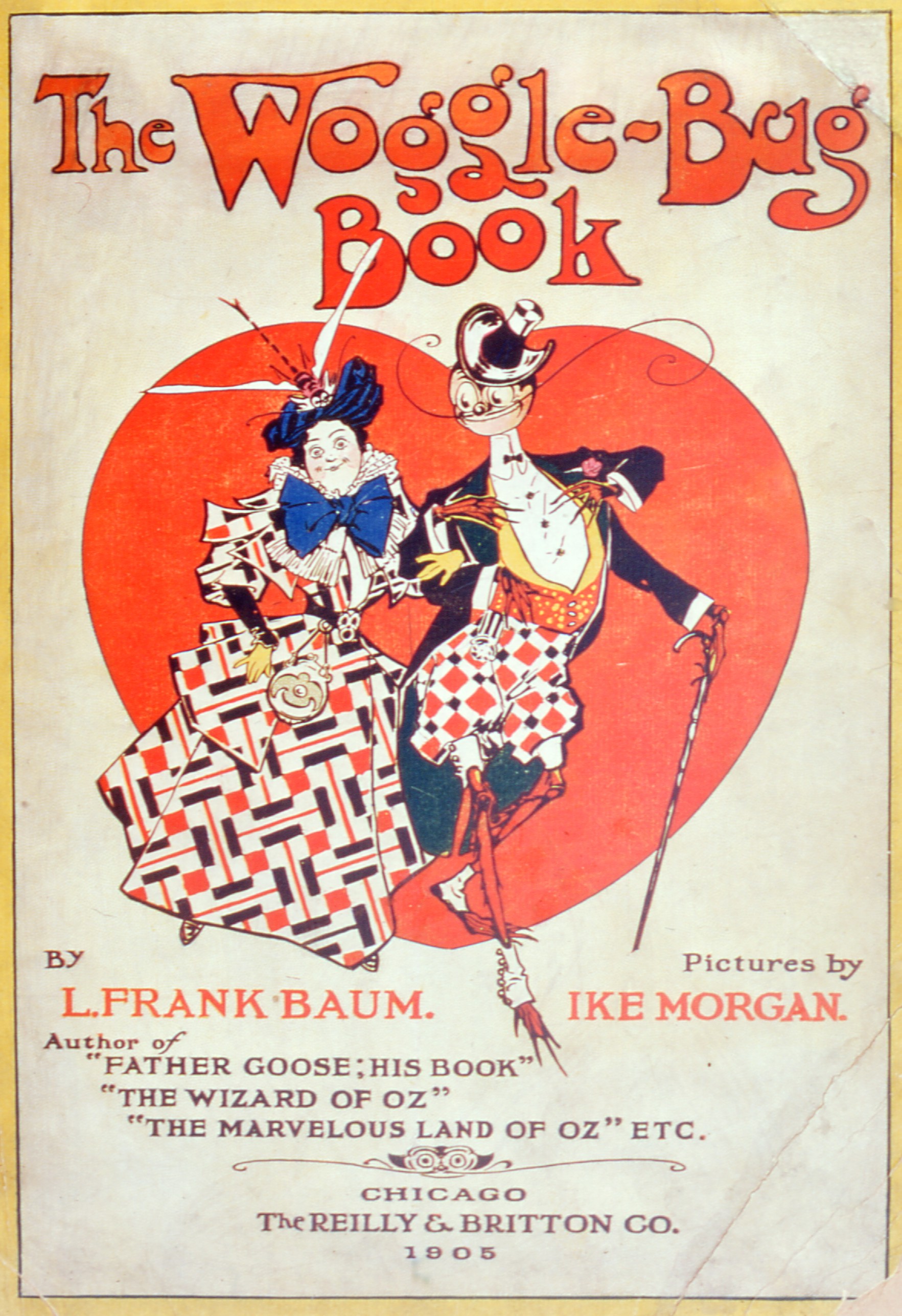
I must confess to not having read all of Baum’s pseudonymous works! But in terms of his contributions to children’s “literature,” the consensus that The Woggle-Bug Book (1905) is his weakest effort is probably spot-on. As an adult, I would argue that Dorothy and the Wizard in Oz (1908) is an endlessly grim story full of conflict from beginning to end, but as a child reader I saw it as a thrilling adventure. Of his best-known books, perhaps Tik-Tok of Oz (1914) deserves special mention in that the story is essentially a blatant rehash of Ozma of Oz (1907) with a good dollop of The Road to Oz (1909) thrown in for flavor.
WW: How many years has it taken you to compile the information for "The Book Collector's Guide to L. Frank Baum and Oz"?
PB: I began
the project early in 2002, and although the bulk of the writing was
done by the
end of 2004, I continued to add new information and photographs until
the
moment the manuscript left for the printer in the fall of 2008. And
there have
been some new discoveries since then that I hope to work into a second
printing
of the Guide.
WW: Why do you think the Oz books were dismissed by
librarians and (for the most
part) have gone out of print over the years?
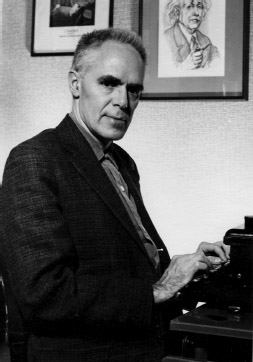 PB:
I agree
with Martin Gardner, who offered several suggestions in his essay “Why
Librarians Dislike Oz”: that it was due to a contempt for the plain and
unassuming prose style and lack of thematic “gravitas,” a dislike (and
distrust) of “series” books in general, the physical makeup of the
books
themselves (which couldn’t withstand heavy usage), and also in no small
part to
the prosaic character of those people drawn to the library profession.
I
believe these factors combined over time to produce a perception that
the Oz
books were essentially “junk food.” Once formed, such conventional
wisdom
becomes self-perpetuating; it helps bolster the ego needs of library
professionals by reassuring them that they have sophisticated and
discriminating tastes. But it completely fails to recognize the power
that Oz
has to capture the child’s imagination. I think that even adults who
fondly
remember the books from their childhoods and reread them to this day
still lose
sight of how completely engrossed they were by them as children.
PB:
I agree
with Martin Gardner, who offered several suggestions in his essay “Why
Librarians Dislike Oz”: that it was due to a contempt for the plain and
unassuming prose style and lack of thematic “gravitas,” a dislike (and
distrust) of “series” books in general, the physical makeup of the
books
themselves (which couldn’t withstand heavy usage), and also in no small
part to
the prosaic character of those people drawn to the library profession.
I
believe these factors combined over time to produce a perception that
the Oz
books were essentially “junk food.” Once formed, such conventional
wisdom
becomes self-perpetuating; it helps bolster the ego needs of library
professionals by reassuring them that they have sophisticated and
discriminating tastes. But it completely fails to recognize the power
that Oz
has to capture the child’s imagination. I think that even adults who
fondly
remember the books from their childhoods and reread them to this day
still lose
sight of how completely engrossed they were by them as children.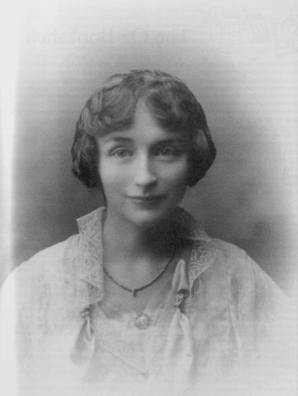
WW: A number of people do not like the direction Ruth Plumly Thompson took with the Oz series, yet she ended up writing five more than Baum did. How do you think they hold up as children's literature?
PB: I enjoyed many of Thompson’s books as a child, but they didn’t have the resonance of Baum’s work. Even then I could sense their superficiality, and was not drawn to reread them nearly as much as the Baum books. And a few of her books I actively disliked, which is something I could never say about even the weakest of Baum’s Oz stories.
WW: How groundbreaking do you consider The Wonderful Wizard of Oz to be in children's literature? Why?
PB: Its importance was and still is phenomenal. Baum intended, first and foremost, to create a jolly good story, and in that he succeeded brilliantly. At a time when children’s literature was overwhelmingly obsessed with providing moral instruction, Baum noted in his introduction that “The Wonderful Wizard of Oz was written solely to pleasure children of today.” The suspense and scares throughout the story were crafted in the service of entertainment rather than to provide “cautionary” examples, so the threats against Dorothy and her companions are not due to their moral failings and the reader is certain they will prevail even while breathlessly awaiting the outcome.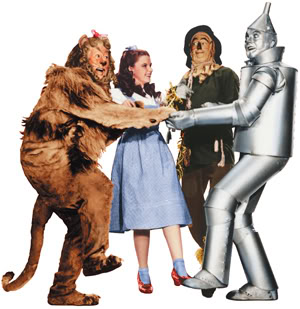 The enormous
popularity of the book across many
diverse cultures worldwide
makes it clear that in his creation of a Scarecrow without a brain, a
Tin Man
without a heart, a Lion without courage, and a little girl seeking only
to
return home, Baum somehow tapped deeply into Jung’s “collective
unconscious” of
human experience.
The enormous
popularity of the book across many
diverse cultures worldwide
makes it clear that in his creation of a Scarecrow without a brain, a
Tin Man
without a heart, a Lion without courage, and a little girl seeking only
to
return home, Baum somehow tapped deeply into Jung’s “collective
unconscious” of
human experience.
WW: What do you think of the
1939 film?
WW: It seems that more Oz books and
original artwork are becoming available at auction lately. How do
you
decide what to buy for yourself or resale? Do you have a personal
limit
on how much you're willing to pay for something, or do you get the
bidder's
frenzy?
PB: When it
comes to Oz I am a collector first and a dealer second, although being
a dealer
provides me with an excellent rationalization for upgrading. My
resources are
definitely limited, so I am always very conscious of cost and set firm
limits
prior to any auction. For me, one of the greatest aspects of Internet
bidding
is the ability to submit a bid in advance of the auction date and then
just
walk away. If I win the item at my price, terrific; if not, I haven’t
been
working myself into a lather waiting for the hammer to fall.
WW: As
a book dealer, how has the
internet affected your business?
PB: The
Internet IS my business. The vast amount and diversity of material
offered on
eBay and book sites like Abebooks.com allows me to target what I wish
to buy
and sell in ways that would have been very difficult prior to the
Internet age.
It also takes a great deal of guesswork out of pricing, since it is
easy to see
what the competition is charging for a given book. Many old-time
dealers bemoan
this new transparency, but I think it is of great benefit to both
buyers and
sellers. The only ones who are really adversely affected are those who
once
profited from arbitrarily high pricing.
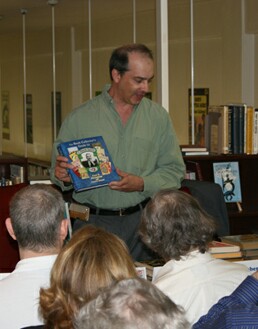 WW: "The Book Collector's Guide
to L. Frank Baum and Oz" is amazingly thorough. Tell us about
your
research, and the various book collections
you
traveled to catalogue.
WW: "The Book Collector's Guide
to L. Frank Baum and Oz" is amazingly thorough. Tell us about
your
research, and the various book collections
you
traveled to catalogue.
PB: I saw a
need for a reference that covered all of Baum’s book-length output, not
just
Oz, and with a special emphasis on ease-of-use. As a collector, I have
always
been drawn to auction and dealer catalogs, such as Schiller/Swann
(1978) or
Peggy Christian #11 (ca. 1970). The best of these provide basic
bibliographic
information without overwhelming detail, but also include capsule
descriptions
that feature interesting tidbits about the histories of the books
themselves. I
always viewed the project as a cross between Hanff & Greene’s Bibliographia Oziana (1976/1988) and
Greene’s & Martin The Oz Scrapbook
(1977). I wanted to produce a useful tool that was also “browsable” and
entertaining.
The
collectors I encountered were incredibly gracious, and with my
collaborator Bob
Schmidt I was fortunate to be granted unlimited access to some of the
finest
private collections in the country. I spent literally weeks examining
just two
of these. Some collectors preferred anonymity while others didn’t mind
receiving credit, but I became uncomfortable with the idea of
pinpointing the
locations of so many treasures and ultimately decided to keep the
collections
unnamed. Though I was constrained by logistics from visiting every
available
collection, those I did examine provided opportunities to photograph
essentially every piece I sought, with a single exception (the dust
jacket to
the first printing of The Marvelous Land
of Oz as mentioned
above). We found interesting variants in even the most modest of
“serious”
collections, and there are still some east coast collections that I
look
forward to visiting in the future.
PB: Unless pressed, I generally keep my hobby to myself. I suppose I present myself more often as a “Collector of L. Frank Baum” than as a “Wizard of Oz fan.” Reactions vary widely: people with some knowledge of the books are enthusiastic and ask questions; people who collect other things can at least relate to it as a hobby and discuss their own interests; and some people just look at you blankly as if you’d said you play the washboard in a jug band or enjoy cow-tipping. ∆
When
he first thought of going into the used book business, several
dealers he knew said he'd have to be "crazy as a march hare."
He lives with his
beautiful wife, Catherine and their new son, Robert Louis in Southern
California.

You may contact Paul at info@marchharebooks.com
March Hare Books online bookshop is here
Blair Frodelius lives in
upstate New York and is the
editor of:
The
Daily
Ozmapolitan, OzProject.com,
and The International Wizard of Oz Club's Ozmapolitan Express
He can be
reached at blair@frodelius.com

